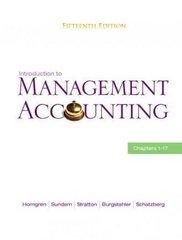Need help with this question.
A recent drug survey showed an increase in the use of drugs and alcohol among local high school seniors as compared to the national percent. Suppose that a survey of 100 local seniors and 100 national seniors is conducted to see if the proportion of drug and alcohol use is higher locally than nationally. Locally, 67 seniors reported using drugs or alcohol within the past month, while 61 national seniors reported using them. Conduct a hypothesis test at the 5% level. NOTE: If you are using a Student's t-distribution for the problem, including for paired data, you may assume that the underlying population is normally distributed. (In general, you must first prove that assumption, though.) Part (a) State the null hypothesis. O Ho: Plocal > Pnational O Ho: Plocal
Pnational O Hai Plocal Pnational Part (c) In words, state what your random variable P'local - P'national represents. O Plocal - P'national represents the difference in proportions of drug and alcohol abuse of local seniors and national seniors. O P'local - P'national represents the difference in the average amount of drug and alcohol abuse of local seniors and national seniors. O Plocal - P'national represents the difference in proportions of seniors who use drugs and seniors who use alcohol. O Plocal - P'national represents the average difference of drug and alcohol abuse of local seniors and national seniors.- Part (d) State the distribution to use for the test. (Round your answers to four decimal places.) P'local - P'national Part (e) What is the test statistic? (If using the z distribution round your answer to two decimal places, and if using the t distribution round your answer to three decimal places.) /---Select--- 2 + -J Part (f) What is the p-value? (Round your answer to four decimal places.) Explain what the p-value means for this problem. If Ho is false, then there is a chance equal to the p-value that the proportion of students who use drugs and alcohol locally is 0.06 less than the proportion of students who use drugs and alcohol nationally. If Ho is false, then there is a chance equal to the p-value that the proportion of students who use drugs and alcohol locally is at least 0.06 more than the proportion of students who use drugs and alcohol nationally. If Ho is true, then there is a chance equal to the p-value that the proportion of students who use drugs and alcohol locally is at least 0.06 more than the proportion of students who use drugs and alcohol nationally. If Ho is true, then there is a chance equal to the p-value that the proportion of students who use drugs and alcohol locally is 0.06 less than the proportion of students who use drugs and alcohol nationally.- Part (g) Sketch a picture of this situation. Label and scale the horizontal axis and shade the region(s) corresponding to the p-value. L/2(p-value) 1/2(p-value 1/2(p-value) 1/2(p-value P'local - P'national P'local - P'national C 0-value p-value P'local - P'national P'local - P'national C C- Part (h) Indicate the correct decision ("reject" or "do not reject" the null hypothesis), the reason for it, and write an appropriate conclusion. (i) Alpha (Enter an exact number as an integer, fraction, or decimal.) a = (ii) Decision: reject the null hypothesis O do not reject the null hypothesis (ii) Reason for decision: Since p-value a, we do not reject the null hypothesis. Since p-value > a, we reject the null hypothesis. Since p-value










